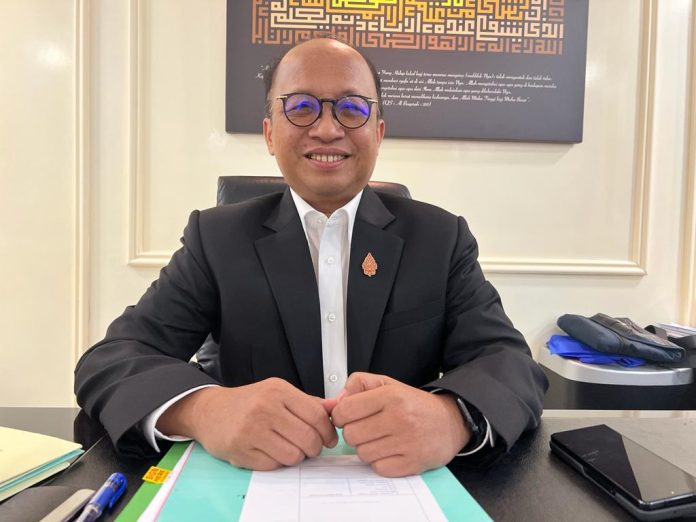JAKARTA – According to the results of the Indonesian population census not long ago, it is known that out of 272 Indonesian residents, there are 211.59 million people who are of working age.
That was stated by the Secretary General of the Ministry of Manpower Anwar Sanusi in a talk with The Editor awhile ago in his office at Gatot Subroto, Jakarta.
“It’s quite big. And in my opinion, it creates a condition that the number of people of working age is very large, especially when viewed from the current demographic structure,” he said.
Of those who work, he continued, some of them are included in the labor force and some are not included in the labor force.
Those who are not included in the labor force mean that they are not yet working for several reasons, such as still at school, still with their parents, and so on.
And, from the workforce, according to the professor, there are people in the category of workers and those who are not working or are called pengangguran (unemployed).
“Our unemployment force is quite large. If we look at it, it has decreased from February 2022 to February 2023, year to year,” he said.
From the data, it can be seen that the current number of unemployed people in Indonesia has reached 7.99 million people.
“That means, if we use Japan as the barometer, there are only 2 percent who are unemployed. There is even only 1 percent in Singapore who is unemployed,” said Anwar.
Meanwhile, from the results of the census of the Central Statistics Agency (BPS) it is also known that the number of people who are actively working reaches 138.63 million people.
Of the 138.63 million people, some of them work part time and work full time, with the number of part-time workers reaching 3.66 million people.
“And there are also ones who we called “half-unemployed”. It means they sometimes work, sometimes they don’t,” he said.
What Are the Challenges in Our World of Work?
Our demographic condition, Anwar continued, is quite good. This happens because the workforce in Indonesia is currently very high.
This is also what makes Indonesia one of those with a demographic bonus.
“He has a kind of dividend which is indeed the benefit of the population, which in fact not all countries experience this kind of thing. Even countries like Japan, China, Korea, Europe, Singapore,” he said.
According to him, these developed countries are experiencing an aging population. That is, in terms of demographic posture, many of them are entering old age or are called the silver age.
If Indonesia succeeds in managing this demographic bonus advantage, Anwar thinks that Indonesia will get a big advantage.
It’s because Indonesia will have a large stock of human resources which are ready to be deployed as local and international workers.
Digital Workforce
Another advantage gained at this time is the large number of young workers who are skilled in technology, both in agriculture and other services.
And as a result, work that is manual in nature will decrease and will be replaced by digital.
What’s the Challenge?
Currently, the average workforce in Indonesia still uses manual methods even though 25 percent of the young workforce is skilled in technology.
However, it also creates a digital divide – with some people who are digital savvy and others who don’t understand anything at all.
“The digital divide also arises due to unequal access. There is a group in Indonesia that we call the 3 Ts. There are those who are left behind (Terluar), there are those who are at the forefront (Terdepan), and there are the Outermost (Terluar) too. So there are still many 3T areas that don’t have access to the internet,” he said.
Tech Experts Now Dominate the World of Work
The world of work today, according to Anwar, is filled with young people who understand technology. However, it also has advantages and disadvantages.
Its advantage is in terms of general science which is extraordinary. However, if not managed properly, it will have a negative effect.
“Children of generation Z and generation Y have a very high sense of independence. They want … to be more precise, they are solitary. Working alone in the room and not disconnected from the digital social world,” he said.
The weakness of workers who are experts in this field, he continued, is that they do not have social friendships and are disloyal at work.
“People who are not loyal easily get bored. They always want new challenges,” he said.
What Should We Do?
According to Anwar, industrial relations and relations with workers must be changed. The system that must be created is collaborative, not instructive anymore.
This two-way communication process is considered by Anwar to be more efficient than building one-way industrial relations.




